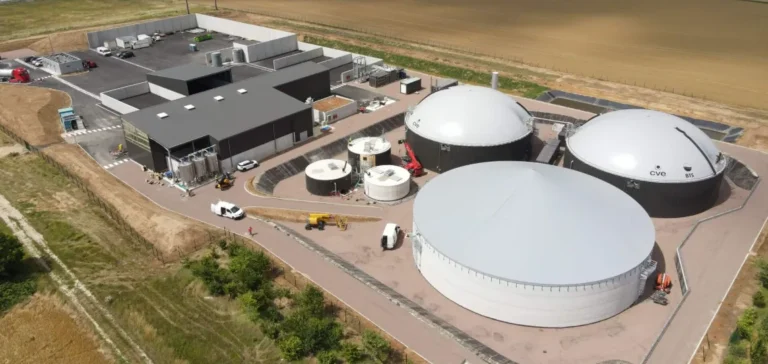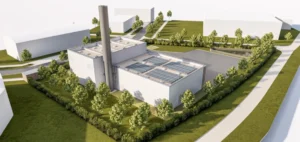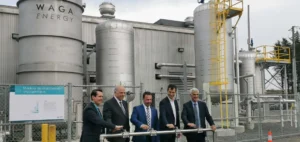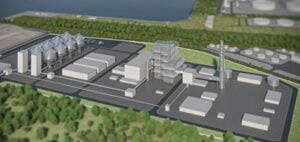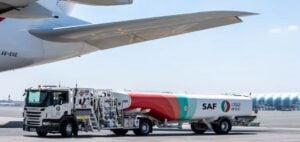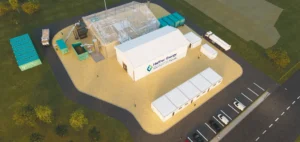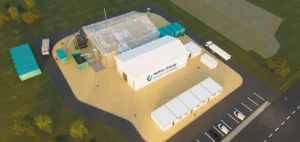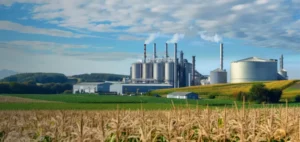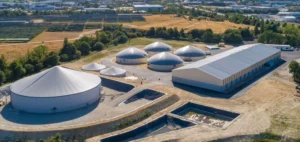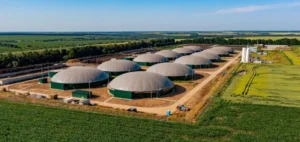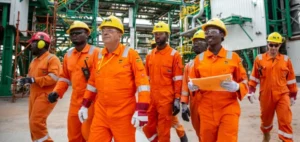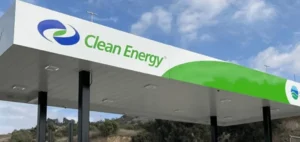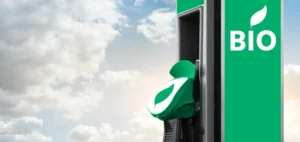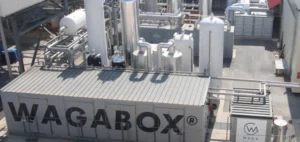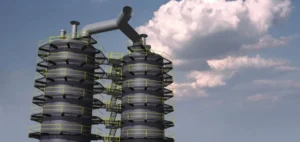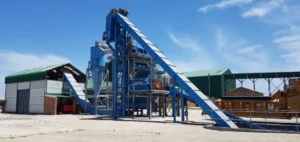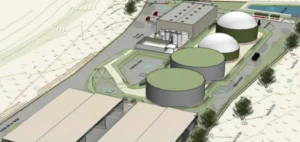For several years, the Communauté d’Agglomération du Pays de Laon has sought to renovate its wastewater treatment plant to accommodate increasing local demand. In this context, Elcimaï Environnement has led since 2017 the comprehensive project of extending and modernising the site, notably including a methanisation unit intended to produce marketable biomethane. This installation, now fully operational, is managed by the Suez group. The unit currently enables the complete recovery of sewage sludge, as well as a portion of local bio-waste, into renewable energy injected into the public network.
Converting waste into biomethane
Located at Chemin de Leuilly in Laon, the wastewater treatment plant collects and processes domestic, urban, industrial wastewater and stormwater. Solid waste, greases, and sands are filtered out to eliminate major pollutants such as carbon, nitrogen, and phosphorus. Once purified, the water is released into the Ardon River, classified as a sensitive zone. The gradual expansion of the local sewer network led to saturation of the plant’s hydraulic capacities around 2015, necessitating its extension and the development of an energy recovery sector.
The project entrusted to Elcimaï Environnement includes the simultaneous treatment of sewage sludge (“boues de Step”) and approximately 400 tonnes per year of additional bio-waste. Previously handled by conventional methods, these bio-wastes now feed the methanisation unit. The biogas produced is purified and injected into the GrDF grid at a rate of 380 Nm³/day, equivalent to an estimated annual production of 14,800 megawatt-hours, sufficient to supply approximately 1,150 households.
Precise objectives for a comprehensive modernisation
The initial project specifications set a triple objective: renovating existing facilities to improve the quality of discharges into the natural environment, expanding the plant’s total capacity to 45,000 population equivalents, and creating a joint methanisation facility treating both sewage sludge and regional bio-waste. The construction phase concluded last September, followed by a period of technical adjustments and an observation phase beginning in early January to validate proper equipment functionality before industrial operation.
The methanisation unit also produces an organic amendment derived from methanised residues, distributed as compost to local farmers. Moreover, the plant’s modernisation includes reinforced tertiary treatment to better control phosphorus levels discharged into the Ardon River, thus limiting environmental risks associated with eutrophication.
Improved landscape integration
To ensure better landscape integration, the former concrete evacuation canal leading to the Ardon River has been replaced by a vegetated outlet, facilitating more regular natural flow and reducing environmental disturbances. Additionally, a wooden footbridge has been installed nearby to maintain pedestrian accessibility to the site.
“The Laon territory has committed to a Zero Waste – Zero Wastage approach,” recalled Christophe Yzet, development manager at Elcimaï Environnement. “The installation of the methaniser aligns with this strategy by valorising 400 tonnes per year of organic waste previously disposed of, while allowing direct resale of the biogas produced into the GrDF grid and local redistribution of compost from methanisation.”


